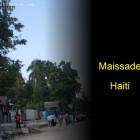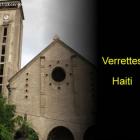ADVERTISEMENT
Nord-Est Department - Haiti Observer Blog
Nord-Est Department, Haiti Observer Blog. Read the following articles about Nord-Est Department
Fort-Liberte In The Nord Department Of Haiti
Fort-Liberté is located in Haiti's Nord-Est-Department. In Haiti, it is the oldest country and Haiti got its independence here on November 29,1803. The Dominican Republic is located close to its border. Around 11,465 people inhabit the place. The language spoken in the region is Creole. Hurricanes, storms and sunshine are all experienced bringing changes in temperature.
How It Got Its Name
Indians inhabited the region originally after which the Spanish colonists came. In 1578 they found the city of Bayaja and in 1605 abandoned it. In 1732 the French reoccupied it as Fort-Dauphin. In 1764, Spanish forces captured it and in 1801 shortly, after independence was declared in 1803, it was restored to the French.
Vallieres In Haiti
Vallières is located in Haiti's Nord-Est Deparment. In the Vallieres Arrondissement, it is a municipality and the capital. It is a third order administrative division and located at 71° 55' 0" West of the meridian and 18° 26' 0" North of the equator. Vallieres has an altitude of 36 meters above sea level.
Support From St Vincent Parish
Around 19,900 denizens inhabit the place. People living in Vallieres have been supported well by St.Vincent Parish. It follows a twinning program with Our Lady of Mercy Church
Positive Effects Of The Twinning Program
Terrier-Rouge A Destination In Haiti
Terrier-Rouge is located in the Nord-Est Deparment in Haiti at an elevation of 36 meters above sea level. In the Trou-du-Nord Arrondissement it is a municipality and a third order administrative division. Around 251,577 people inhabit the place. It lies 1° 57' 00" to the West and 19° 38' 00" to the North.
Occupation
Many of the people are small scale farmers in Terrier-Rouge. Not many crops are harvested due to which feeding their families is a big struggle. Pea-congo, maize, sisal, potatoes and cassava are mainly produced here. Occasionally, the farmers are able to produce more than they need and sell the surplus produce in the market to earn a few extra coins
Sainte Suzanne, A Destination in Haiti
Sainte-Suzanne is located in Haiti's Nord-Est Deparment which is municipality in the Trou-du-Nord Arrondissement. Sainte-Suzanne spreads over an area of 122km. Around 25,596 people inhabit the place. Chop, Blanc, Sarazin, Mocha-Nine, Fuller and Fond Bleu are the six communal sections comprising Saint-Suzanne.
Occupation and religion
Subsistence farming is the main occupation practiced by the people of Sainte-Susanne. Lime, coffer and orange trees are grown. To generate income, live stock is reared by some of the farmers in Saint Suzanne. Many of the people living in Sainte Suzanne are Catholics and practice Voodoo. Protestants also live there but are a minority.
Caracol A Village In Haiti
Caracol, a village in Haiti, is located in the Nord-Est Deparment which is a municipality in the Trou-du-Nord Arrondissement. At 19°41′0″N and 72°1′0″W it is located at a slight elevation and has around 6236 inhabitants. It is the least visited destination in Haiti.
Caracol is in the northern coast of Haiti and it was a fishing village stricken by poverty. It is also known to be poorest of all villages in the country.
Climate
The region is mountainous and rough and it borders with the Dominican Republic for around 360 kms. Caracol enjoys a semi arid and tropical climate. Trade winds are easily cut off by the mountains in the region. French is the official language spoken in Caracol.
Mont Organise, Friendly Trade Partner of Dominican Republic
Mont Organise, part of the Ouanaminthe Arrondissement, under the Nord Est Department, lies very close to the Dominican Republic border in the north-east area of Haiti. Two sub-divisions comprise it, Wood Lice and Savanette.
Mont Organise's economy relies on trade activities conducted with the Dominican Republic (DR), whose borders are nearby. Not all trade is legal between the two countries. Smuggling operations exist, and both governments look the other way. Conflict between Haiti and the DR has had an intermittent history, but in some areas they show tolerance. One of them is the smuggling trade.
Ouanaminthe and Free Trade Zone
Ouanaminthe is one of the largest cityships situated within the Nord-Est Department. It has a population numbering 100,000, 10% of whom live in the metropolitan area. Located close to the Dominican Republic border, the Ouanaminthe people cross over via the Massacre River to peddle their wares twice weekly at the Dajabón market.
Ouanaminthe has a well-developed education system. It follows the Haitian model, beginning with Kindergarten, advancing to Primary, then Secondary, and finally University level. Private schools are numerous and church-sponsored. As part of the effort to make education accessible to all residents in Ouanaminthe, the Faith and Joy non-government organization, funded by the Jesuit Refugee Service, is building several new primary schools.
Perches, Small and Struggling City
Perches, one of the smallest cityships in the Fort Liberté Arrondissement, is part of the Nord Est Department. It contains two sub-divisions, Haut-des-Perches and Bas-des-Perches, and a population of barely 8,000.
The chief means of producing income in Perches is through sustainable farming. Pistachio, nut, corn, mango, orange, and lime crops are raised. Livestock farming is also practiced.
Like other cityships within the Fort Liberté Arrondissement, Perches lacks electrical and road systems. If one wants to get to central parts of Perches, they must use hiking trails. Also lacking its own airport, Perches remains difficult to get to, especially for non-government organizations (NGO) there to start infrastructure projects. The nearest airports, Mergellina Harbor and Beverello Harbor lay 10 and 13 kilometers out of the area.
Capotille produces cassava, corn, and pistachios
Capotille, a northeastern cityship in Haiti, lays within the Ouanaminthe Arrondissement in the Nord Est Department. Capotille is one of two districts in the arrondissement, the other being Lamine.
Water is a plentiful resource in the town as it is situated near several waterways, the Colorado, Vizoneau, Mine, Nantes, and Bernard rivers. Not surprisingly, agricultural activities dominate Capotille's economy. Farmlands produce cassava, corn, and pistachios mainly, but there are plenty of mango, orange, and avocado trees dotting the landscape.
The town's infrastructure is adequate. Law enforcement has a presence there with a police station and courthouse, and city government is led by Mayor David Jean-Baptiste.
Ferrier, originally named Maribeaux
Ferrier is a small cityship contained within the Fort Liberté Arrondissement, part of Nord Est Department. Located in north Haiti, it was established in 1932 and originally named Maribeaux. It was raised to the level of a cityship in 1946 and is comprised of a single commune, Maribaboux.
Farmers in Ferrier engage in sustainable farming. They produce oranges, tobacco, and limes, as well as livestock, to provide for themselves. The land in Ferrier is inadequately irrigated, but is a good place to grow rice, and has received funding from non-government organizations (NGO) to do so.
Infrastructure in Ferrier is underdeveloped. No road or electrical systems exist there, and the town is without an airport. If NGO workers want to travel out of the area, they must access airports miles away, the nearest being Les Cayes, and furthest, Port-au-Prince International Airport. The people in Ferrier also lack a hospital. To get medical attention, they must get to the nearest medical facility located 30 miles out of town in Milot.
Our objective is to share with you news and information about Haiti and the people of Haiti. Traditions, habits and the way we were or grew are alive in this site. We highly recommend that you Subscribe to our Newsletter and also share with us some of the things that are memorable and made us unique people.

 Maissade, Haiti
Maissade, Haiti  Haitian Creole Translation
Haitian Creole Translation  Informative Marketing and Advertising in the Haitian Community
Informative Marketing and Advertising in the Haitian Community  Something to think about
Something to think about  Verrettes, Haiti
Verrettes, Haiti